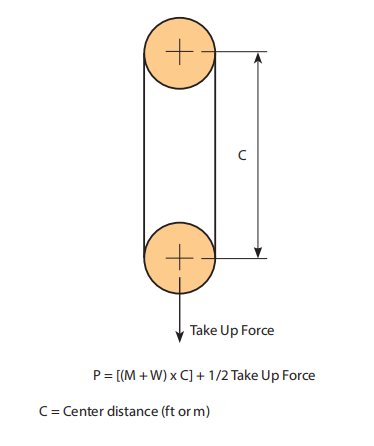Introduction
A careful evaluation from the disorders surrounding a conveyor is important for accurate conveyor chain choice. This part discusses the essential concerns expected for effective conveyor chain choice. Roller Chains are frequently utilized for light to reasonable duty material dealing with applications. Environmental disorders might call for using exclusive materials, platings coatings, lubricants or the potential to operate with out further external lubrication.
Standard Details Expected For Chain Selection
? Type of chain conveyor (unit or bulk) including the approach of conveyance (attachments, buckets, by means of rods and so on).
? Conveyor layout including sprocket spots, inclines (if any) and also the variety of chain strands (N) to be employed.
? Amount of materials (M in lbs/ft or kN/m) and variety of materials to become conveyed.
? Estimated weight of conveyor components (W in lbs/ft or kN/m) such as chain, slats or attachments (if any).
? Linear chain speed (S in ft/min or m/min).
? Environment through which the chain will operate together with temperature, corrosion circumstance, lubrication ailment and so on.
Step one: Estimate Chain Tension
Use the formula below to estimate the conveyor Pull (Pest) and then the chain stress (Test). Pest = (M + W) x f x SF and
Check = Pest / N
f = Coefficient of Friction
SF = Pace Aspect
Step 2: Make a Tentative Chain Selection
Making use of the Check value, make a tentative selection by deciding upon a chain
whose rated operating load better compared to the calculated Test worth.These values are appropriate for conveyor support and are diff erent from individuals shown in tables at the front of the catalog which are associated with slow velocity drive chain usage.
Also to suffi cient load carrying capability generally these chains needs to be of a specific pitch to accommodate a sought after attachment spacing. One example is if slats are to get bolted to an attachment every 1.five inches, the pitch of your chain selected ought to divide into 1.5?¡À. So a single could use a 40 chain (1/2?¡À pitch) with all the attachments each and every 3rd, a 60 chain (3/4?¡À pitch) using the attachments each and every 2nd, a 120 chain (1-1/2?¡À pitch) using the attachments every pitch or perhaps a C2060H chain (1-1/2?¡À pitch) together with the attachments every pitch.
Step 3: Finalize Choice – Determine Actual Conveyor Pull
Just after making a tentative selection we have to verify it by calculating
the actual chain stress (T). To accomplish this we need to fi rst determine the real conveyor pull (P). In the layouts proven around the right side of this web page choose the ideal formula and determine the total conveyor pull. Note that some conveyors could possibly be a combination of horizontal, inclined and vertical . . . in that case determine the conveyor Pull at every area and add them collectively.
Phase 4: Determine Maximum Chain Stress
The utmost Chain Tension (T) equals the Conveyor Pull (P) as calculated in Stage three divided by the amount of strands carrying the load (N), times the Pace Aspect (SF) proven in Table two, the Multi-Strand Element (MSF) proven in Table 3 and also the Temperature Factor (TF) proven in Table four.
T = (P / N) x MSF x SF x TF
Phase five: Test the ?¡ãRated Operating Load?¡À in the Chosen Chain
The ?¡ãRated Working Load?¡À in the chosen chain really should be better compared to the Highest Chain Tension (T) calculated in Stage 4 above. These values are acceptable for conveyor support and are diff erent from individuals proven in tables at the front  of your catalog that are linked to slow pace drive chain usage.
of your catalog that are linked to slow pace drive chain usage.
Phase 6: Verify the ?¡ãAllowable Roller Load?¡À of your Selected Chain
For chains that roll to the chain rollers or on leading roller attachments it truly is necessary to check out the Allowable Roller Load?¡À.
Note: the Roller load is established by:
Roller Load = Wr / Nr
Wr = The complete weight carried through the rollers
Nr = The number of rollers supporting the fat.